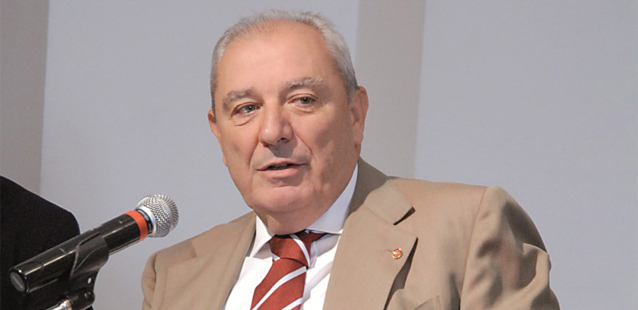CAE-CNR: a deeply rooted partnership. An interview with Prof. Lucio Ubertini
November 2015

CAE's team was young but already highly qualified when, back in 1980, we provided the first hydro-meteorological monitoring systems to IRPI CNR. An Interview with Prof. Lucio Ubertini, then President of the institution and a lead character in the birth of an important collaboration between scientific and business world.
- Prof. Ubertini, your relationship with CAE originated in 1980 when the company, in its third year of life, was entrusted by Perugia's IRPI CNR* - of which you were in charge - with the creation of a hydrometeorological monitoring system, complete with weather stations equipped with rain gauge and anemometer. It was quite a technologically innovative system at the time. What were your needs back then, and what pushed you to choose CAE?
The relationship with CAE began in very simple way: young engineers from different backgrounds (hydraulic and electronic) met on a typically interdisciplinary issue and understood each other immediately. Forecasting a flood requires the knowledge of both the hydraulic-hydrological phenomenon and the IT/electronic monitoring system: acquisition, transmission, storage, processing and finally dissemination of the information. From the technical understanding then came the economic agreement, therefore a close partnership - rather than a buyer-to-consumer relationship - began in order to achieve a real "prototype". This way, the research department managed to improve the physical-mathematical products such as the forecasting of a flood and the advance on the forecasting, as well as the ability to intervene on measuring tools as they improved their performance.
- Did the installation work according to expectations? Looking at hydrometeorological monitoring from the point of view of safeguarding citizens and property, what advances have been made thanks to choosing such systems?
Of course it did. We were very pleased with the professionalism and competence of each member of CAE with whom we have cooperated. The benefits have been significant in particular regarding the safety of human lives, given that we could rely on a few hours advance on the real-time forecasting of floods - and not just for large basins, such as rivers Po or Tiber, but also for smaller basins of about a thousand square kilometers.
- Nowadays, technologies and know-how have developed, as well as the needs they face: the new scenario represented by the overlap of two crucial elements of risk, such as the territorial instability and climate change, raises the need for a "healthy" and instrumental relationship between academia, institutions and companies. What do you hope for, from this point of view?
I hope that we can complement research and operational scope more and more. This combination, which was strongly supported in Italy by the establishment of a Department of Civil Protection, has been reinforced in other countries by the launch of a wider collaboration with civil defense (or security). An example: in 2003, following the Twin Towers attacks, the USA Government created the State Department of Homeland Security, of which natural disasters are a key focus. I would like to quote the former mayor of New York Rudolph Giuliani, who in his Presidential election campaign manifesto wrote: "Preparing for terrorist attacks and for natural disasters are complementary goals: when cities and states prepare for natural disaster, they also strengthen our response to potential terrorism. The next administration's approach to homeland security should be based on three core principles: prevention, preparedness, and resilience".
- Prof. Ubertini, you are a member of the scientific committee of UNESCO's WWAP-World Water Assessment Program, and President of the Italian National IHP Committee (the international hydrology program, also promoted by UNESCO). Can you give us a definition of hydrology and how it interfaces with the study of climate change, and its impact on the planet?
I very much agree with definition of "Hydrology" featured in the Treccani Encyclopedia: "in a broad sense, the science that deals with the study of water from a chemical, physical and mechanical point of view, whatever its origin, nature or location. After the birth of specialized sciences (eg., oceanography for marine waters, limnology for lake waters...), hydrology has taken on a less broad meaning, becoming the science that deals with continental, surface and underground waters, mainly in relation to the cycle that they carry from the moment they fall on Earth's surface - in the form of precipitation - until they disperse in the subsoil or return into the atmosphere by evaporation. In particular, hydrology deals with atmospheric precipitations, runoffs and consequent water course regimes, evaporation, in-depth penetration of the water in mountain basins and plains, etc".
- Beginning with the current and quite depressing scenario of the territorial and geological instability in Italy, should you make predictions - one optimistic and one pessimistic - what fears and what hopes do you hold for the future of our country?
My optimistic prediction is that in a short time our politicians would understand the need and usefulness of creating a Ministry for Civil Security; the pessimistic one is that unfortunately, the maintenance of the territory, including monitoring, is extremely demanding and not very profitable, so it will be less and less cared for as we go along.
Patrizia Calzolari
*IRPI CNR is the Research Institute for Geo-Hydrological Protection, affiliate to the Italian National Research Council.
